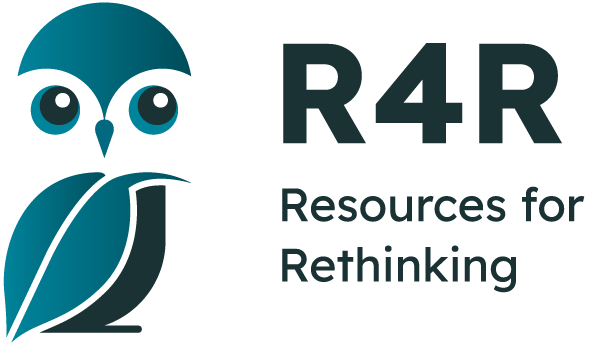Search for Resources

Resources
-
Humans and the Environment
Students consider the ethics of human relationships with the environment. Specifically, they consider how practices such as the genetic modification of plants and animals involve a range of ethical positions towards non-human life. Students work in groups...
Full curriculum matchAvailable for download -
Flight or Fight
While peacefully running through the coastal rain forest of Vancouver's Stanley Park, Jane suddenly notices a sick bird bobbing in the water. Her rescue of the oiled sea duck leads her to the doors of the Urban Wildlife Rescue Centre and a life-changing...
Full curriculum matchAvailable to Order -
Gaia Wild
Jane, a high school senior, is thrilled to land a job working with the animal actors on the set of a local movie production especially when she is able to reconnect with Gaia the elephant. However her enthusiasm fades when she becomes increasingly...
Full curriculum matchAvailable to Order -
Crossing To Freedom
Young Solomon and his grandfather along with fellow slave Levi have managed to escape their wretched existence on a Georgia plantation. However, tragedy suddenly strikes and Solomon and Levi are forced to travel on alone, leaving Grandpa behind. ...
Full curriculum matchAvailable to Order -
Flush
An attack on the "Coral Queen" has put Noah's father in jail and it is now left to Noah to prove that this floating casino has been dumping raw sewage into the waters off the Florida Keys. Determined to uncover the truth, he enlists the aid of a...
Full curriculum matchAvailable to Order -
A Dandelion's Life Cycle
This short animation guides young students through the life cycle of a dandelion. The process begins with germination and continues through pollination, seed dispersal and regrowth. Students will also be able to identify the requirements for...
Full curriculum matchAvailable for download -
Adaptation
This rap video will get students on their feet while teaching them how adaptations help animals survive in a particular habitat. Featuring the camel with all of its neat structural features, the catchy tune will soon have a class singing along as...
Full curriculum matchAvailable for download -
What's Native and We're Being Invaded - Two Lessons for Young Learners
What's Native and We're Being Invaded are two complimentary lessons that introduce students to the topic of invasive species through hands-on activities that focus on plants. The learning by doing approach is particularly appealing and fosters an...
Full curriculum matchAvailable for download -
Winston of Churchill
Just like his famous namesake, Winston the polar bear is a leader and fighter whose cause is global warming and its impacts on the ice of Hudson's Bay. Winston knows that to save his home he must educate the human visitors who come to observe the...
Full curriculum matchAvailable to Order -
The Secret of the First One Up
Lila the groundhog is curious about the early awakening of her Uncle Wilbur each year. As she snuggles into her cozy bed for her long winter sleep Lila is determined to solve the mystery by being the first one up. Sure enough she rises before...
Full curriculum matchAvailable to Order -
The Monarch Migration
In this engaging simulation, students become monarch butterflies and experience the challenges of the fall journey to Mexico. After discussing what migration is and why different species migrate, students follow a script that introduces different...
Full curriculum matchAvailable for download -
Acid Rain. Where Have all the Rainbows Gone?
This resource introduces students to the basics of pH in the context of acid rain precipitation and the environmental damage it causes. It also allows students to gain an understanding of the underlying social and economic dimensions of the...
Full curriculum matchAvailable for download -
Race to Displace
In this ESD board game students assume the characteristics of native or introduced plants to experience first-hand the influence of species interactions and changing environmental conditions on ecosystems. It also provides an excellent framework for exploring...
Full curriculum matchAvailable for download -
The Invaders: Video
This short video explores the issue of invasive species. Focusing on the zebra mussel, the film effectively demonstrates the environmental and economic damage that can result from the introduction of this and other non-native species. Attention...
Full curriculum matchAvailable for download -
Rain Check: A Guide For Stormwater Action
This guide for taking action provides an opportunity to engage students in a service learning project. They investigate how storm water run-off can effect the water cycle, ecosystem preservation, flooding, pollution and the quality of their drinking water....
Full curriculum matchAvailable for download -
Tracks in the Snow....in the Classroom?
This resource offers a number of engaging activities in which students identify and interpret animal tracks left behind in the snow. The learning can take place in a near-by natural area, the schoolyard and the classroom. The resource provides direct...
Full curriculum matchAvailable for download -
Snow Characteristics
In this outdoor inquiry students investigate how the depth and composition of snow can determine its insulating effects. After digging a snow pit, the air temperature is measured and the temperature and composition of the snow are recorded at regular...
Full curriculum matchAvailable for download -
Providing a Backyard Feeding Station for Birds
This easy to implement activity provides students and teachers with a blueprint for building a winter bird-feeding station. Using readily available and inexpensive materials, students create different types of feeders to attract a variety of over-wintering...
Full curriculum matchAvailable for download -
Natural Gas: A Cleaner Energy Solution or Just Another Fossil Fuel?
Students explore current information about natural gas and compare its greenhouse gas emissions to those of other fossil fuels. They take positions and debate the question: Should we expand our use of natural gas as an energy resource, using it...
Full curriculum matchAvailable for download -
How We Know What We Know About Our Changing Climate
The internet and other media offer an over abundance of information and opinions about climate change. The challenge is to ensure our youth are provided with authentic evidence that supports informed decision making. This book introduces young...
Full curriculum matchAvailable to Order

